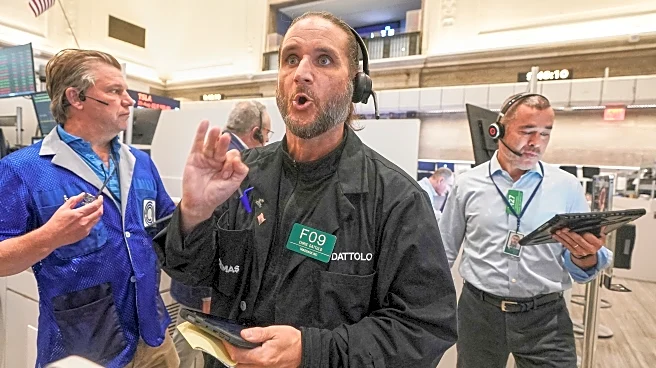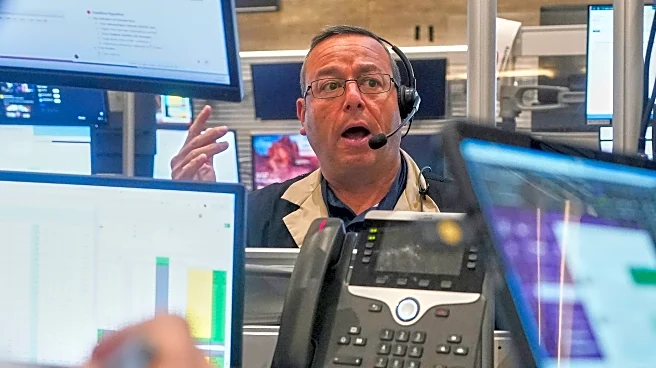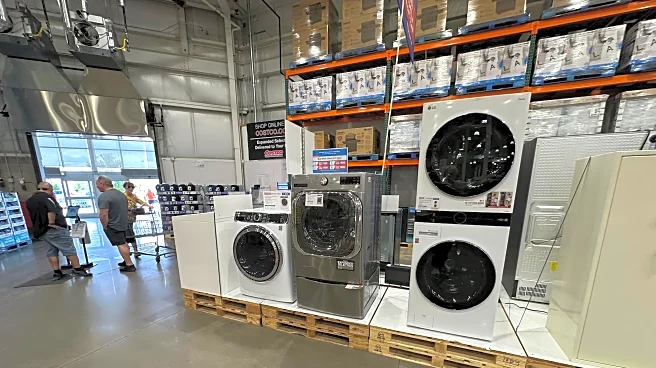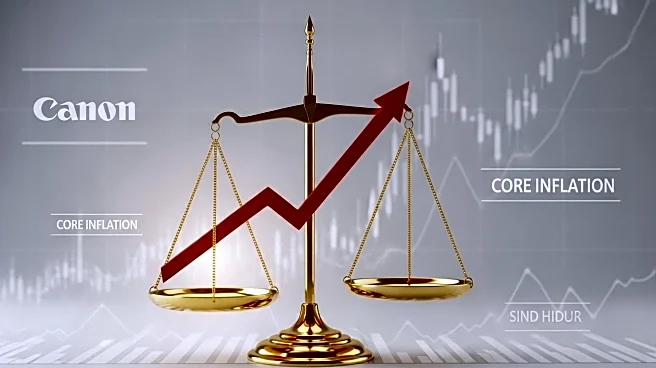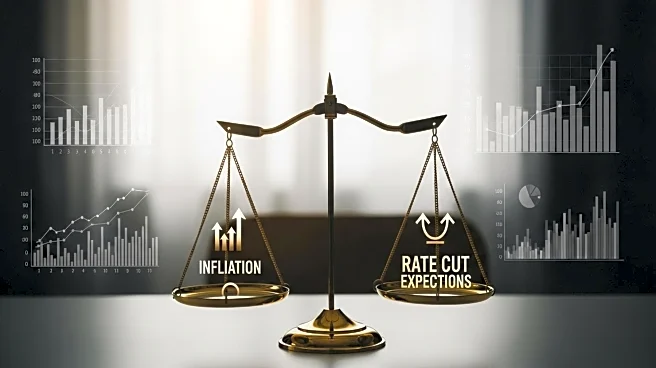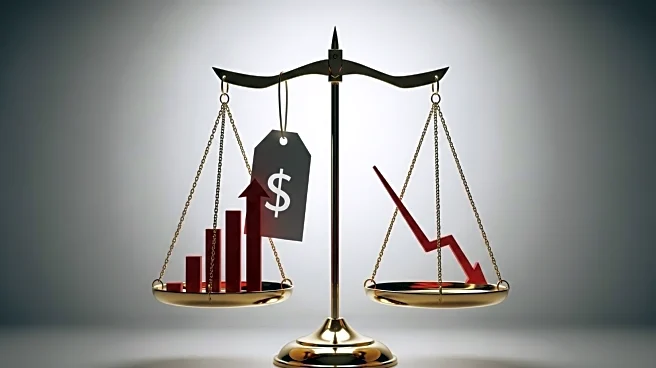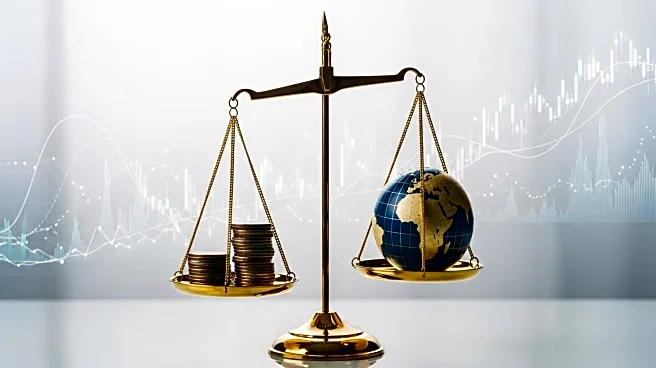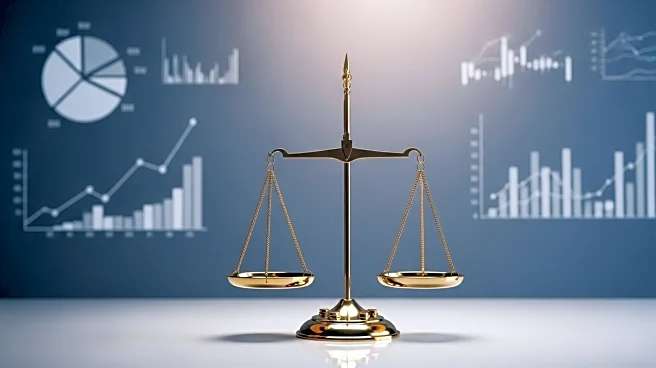What is the story about?
What's Happening?
The Federal Reserve's preferred inflation gauge, the Personal Consumption Expenditures (PCE) Price Index, remained steady at 2.6% annually in July, as reported by the Commerce Department. However, core inflation, which excludes food and energy, increased to 2.9%, the highest since February. This rise in core inflation comes despite President Trump's tariffs, which have not significantly altered the overall inflation rate. Consumer spending also saw a notable increase of 0.5% in July, driven by purchases of durable goods like cars and appliances. This spending boost could contribute to economic growth, which has been sluggish in the first half of the year.
Why It's Important?
The steady inflation rate, coupled with rising core inflation, presents a complex scenario for the Federal Reserve as it considers interest rate adjustments. While inflation remains above the Fed's 2% target, the increase in consumer spending suggests resilience in the economy. This dynamic could influence the Fed's decision to cut interest rates, as lower rates may further stimulate spending and economic growth. However, the potential for increased inflationary pressures poses a risk that the Fed must balance carefully. The outcome of these decisions will have significant implications for economic stakeholders, including consumers, businesses, and investors.
What's Next?
The Federal Reserve is expected to cut its key interest rate at its next meeting, but the extent and frequency of future cuts remain uncertain. Policymakers will likely proceed cautiously, considering the mixed signals from inflation and consumer spending data. The upcoming nonfarm payrolls report will provide additional insights into the labor market, potentially influencing the Fed's approach to monetary policy.
AI Generated Content
Do you find this article useful?


